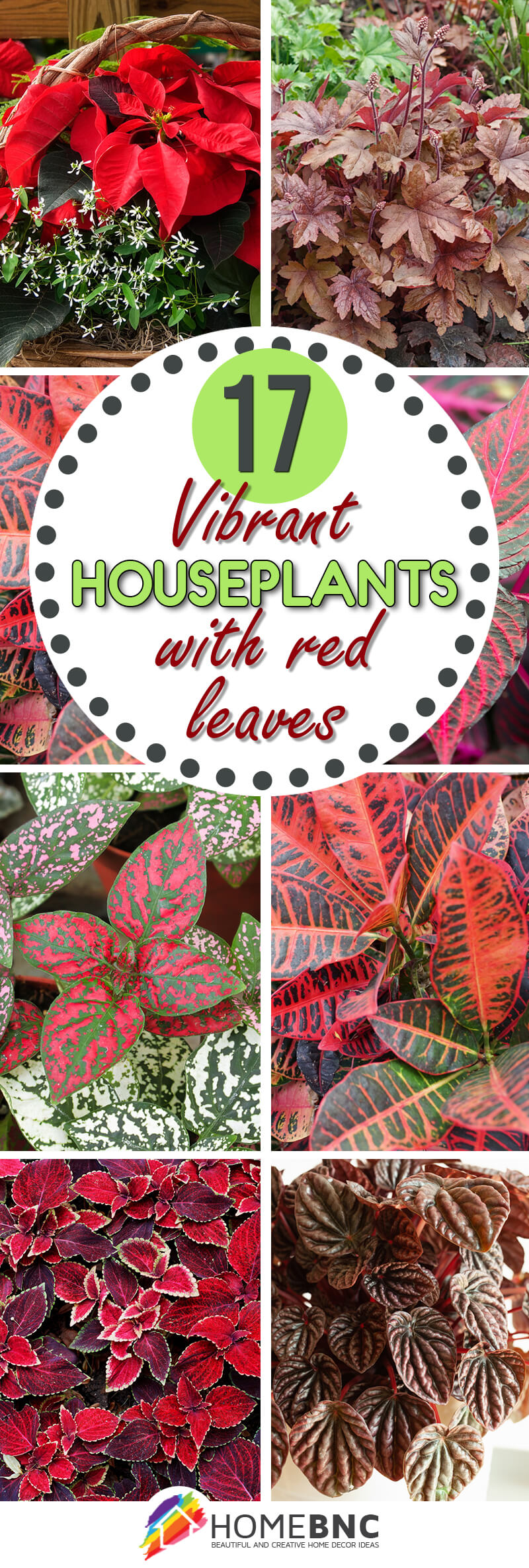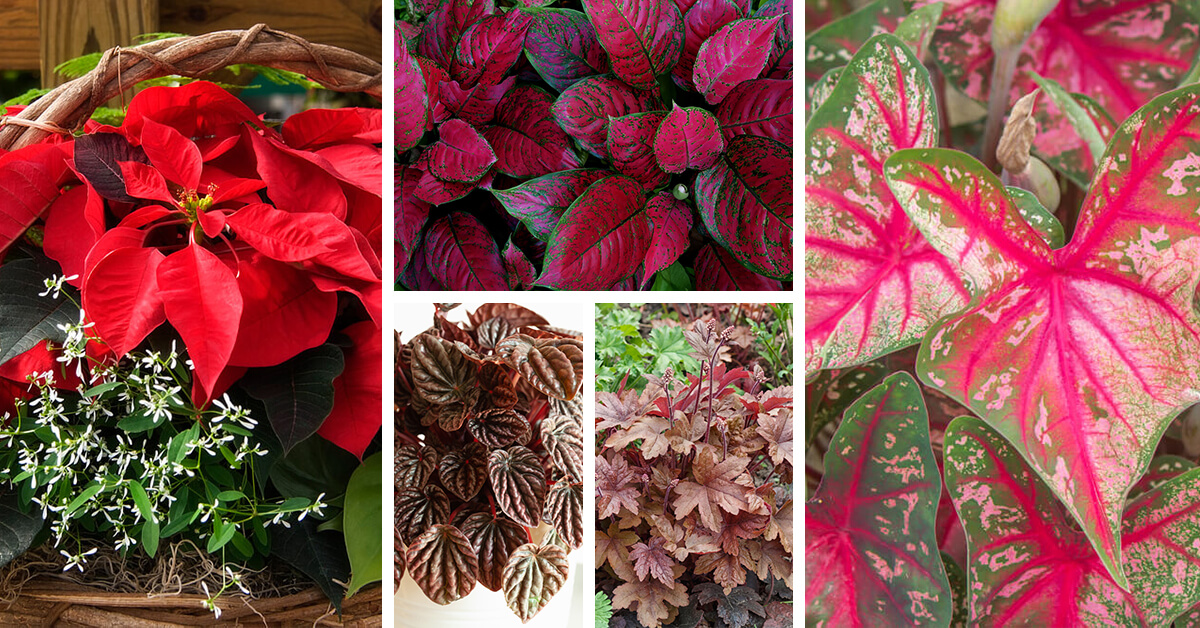Some people are quick to assume that most houseplants provide color via their flowers alone. However, that is far from the truth. The reality is that there are many houseplants with red leaves that will add vibrancy and rich hues to your favorite indoor living spaces, whether they are in bloom or not. What’s even more exciting is that plants with red leaves are not as rare as you might expect either. As you’ll soon see from our list of 17 examples, there are plenty of red-leaved houseplants that you can start growing today.
Key Takeaways
Learning about the best houseplants with red leaves is an exciting venture, but it is an incredibly informative one as well. As you read through this list, you’ll learn a lot of general knowledge about red-leaved houseplants. Some of the most prevalent takeaways are the four in the list below:
- Red houseplant leaves come in many different shapes and shades.
- Red leaves are often the result of cultivation rather than being naturally occurring.
- Many houseplants with red leaves developed from tropical plant species.
- Houseplant species that can have red leaves can often have other leaf colors as well.
17 Mind-Blowing Houseplants with Red Leaves You Should Plant Today
1. Red Aglaonema (Aglaonema commutatum)
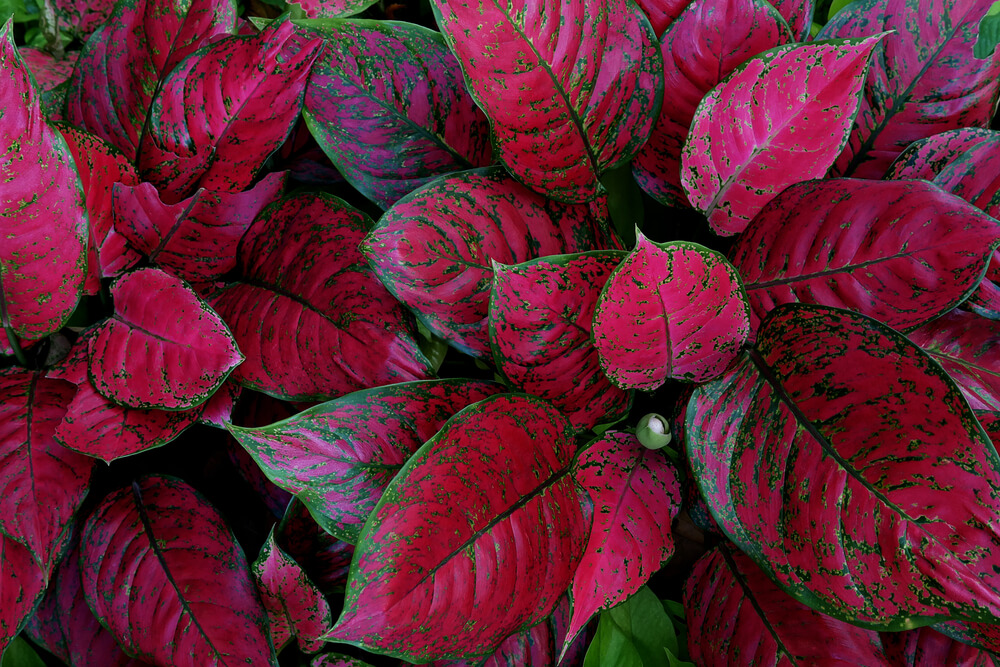
The red aglaonema is one of many houseplants in the Aglaonema. Most of these plants are well known for their colorful foliage, and among those varieties, this is the best option for those who love red leaves. Often, you’ll find that this plant can go by the name Chinese evergreen as well. But no matter what you choose to call it, this plant will be easy to recognize, thanks to its dark red leaves that include speckled green margins. With exposure to bright indirect light, you can expect this small plant to thrive and reach a height of less than two feet tall.
2. Elephant Ears (Caladium)
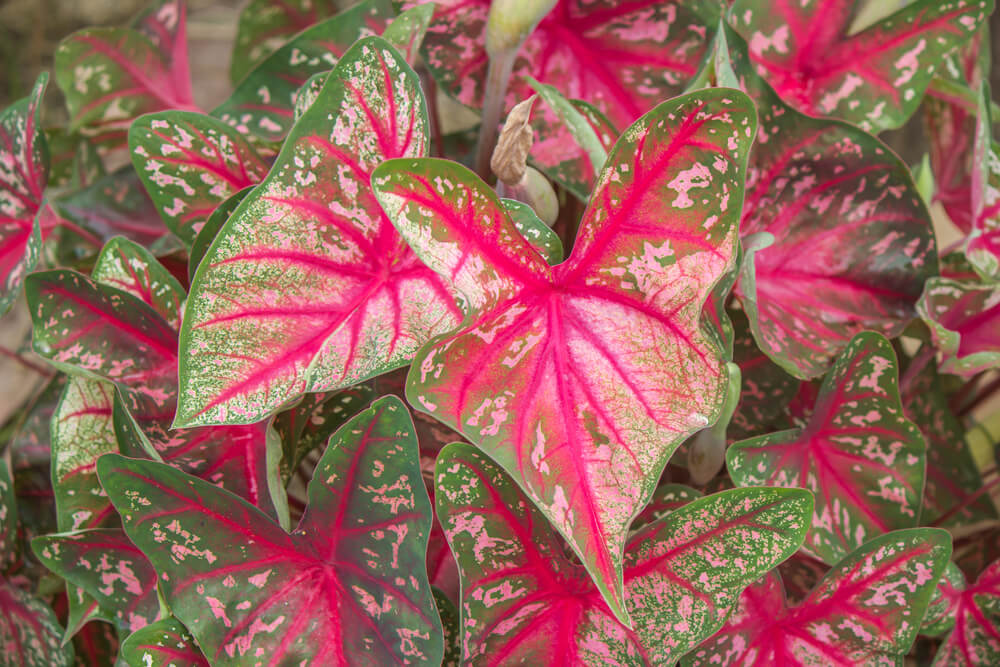
If you are a fan of tropical houseplants, then you are likely to be familiar with the group of plants that people refer to as elephant ears. You’ll also likely know that these plants are aptly named since their leaves are incredibly large and have a shape similar to the ears of an elephant. As will be common for many of the plants on this list, elephant ears come in many different varieties, many of which have unique leaf colors. As such, you should be sure the plant you grow has a red hue that you like before you purchase it.
3. Poinsettia (Euphorbia pulcherrima)
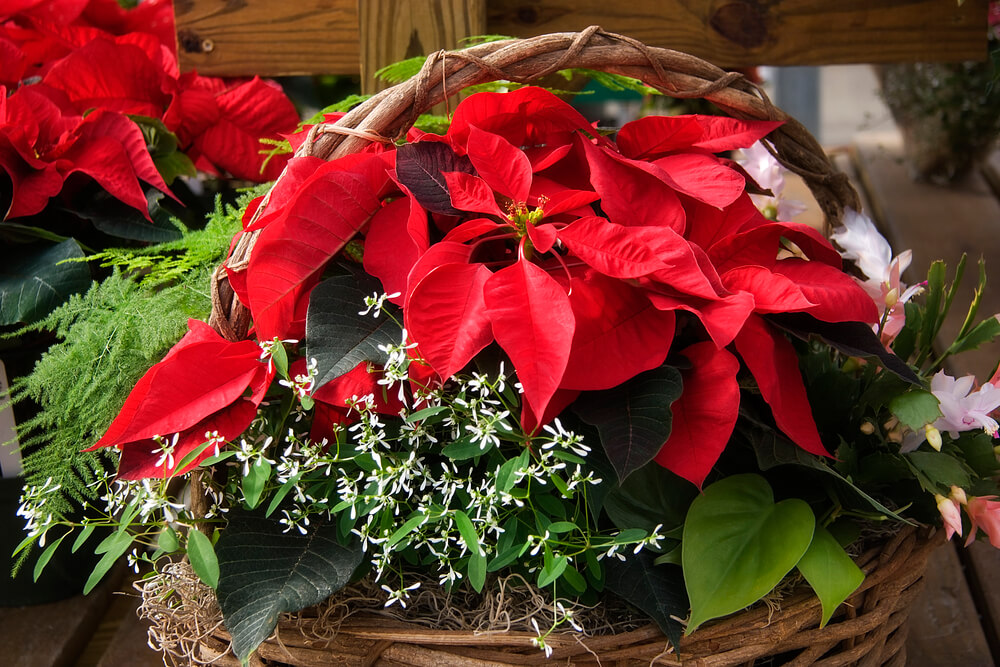
Even a casual plant enthusiast will be familiar with this entry. Poinsettias are one of the most common houseplants, and they are especially prevalent during the winter holiday season. Part of what makes a poinsettia so valuable as a piece of holiday décor is its red leaves. But the truth is that those leaves are not true leaves at all, despite having a shape that is nearly identical to the true leaves of a poinsettia plant. Instead, those noticeable red parts are bracts that surround the plant’s small flower cluster. But technical classifications aside, poinsettias are sure to satisfy a fan of red-leaved plants.
4. Herbst’s Bloodleaf (Iresine herbstii)
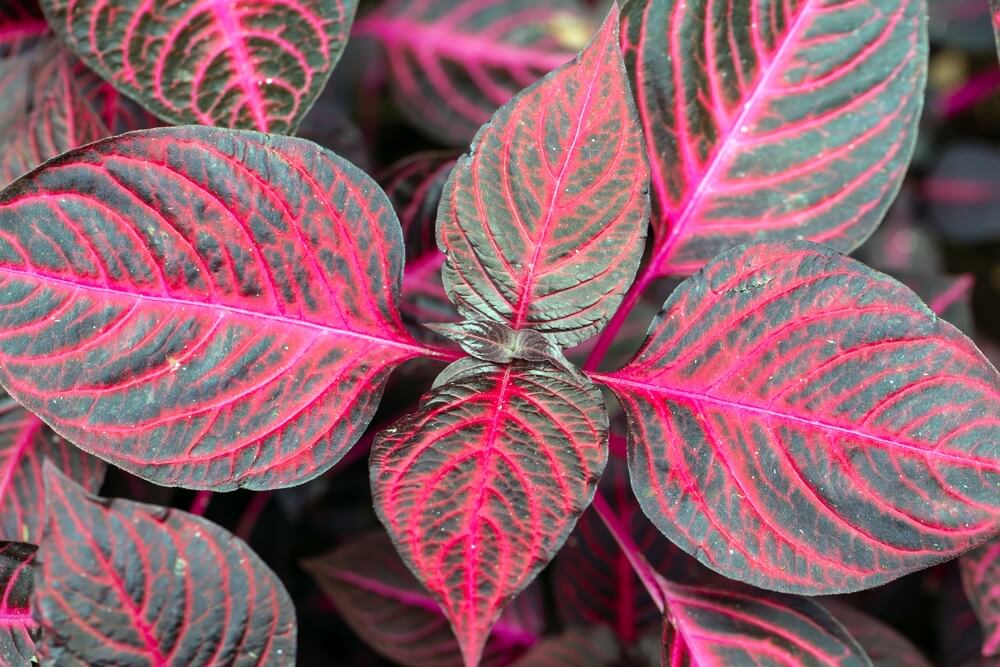
The Herbst’s bloodleaf plant has vibrant leaves even compared to the rest of the red-leaved plants we’ve collected in this list. The veins of those leaves are nearly neon red, and the rest of the leaves have a darker, blood-red shade. Due to that fantastic coloration, this plant has gained many strange but apt common names, including beef plant and chicken gizzard plant. You can grow this plant either outdoors as a perennial or you can grow it has a part of your houseplant collection. Either way, its red foliage is sure to make a bold statement wherever it grows.
5. Coral Bells (Heuchera ‘Forever Red’)
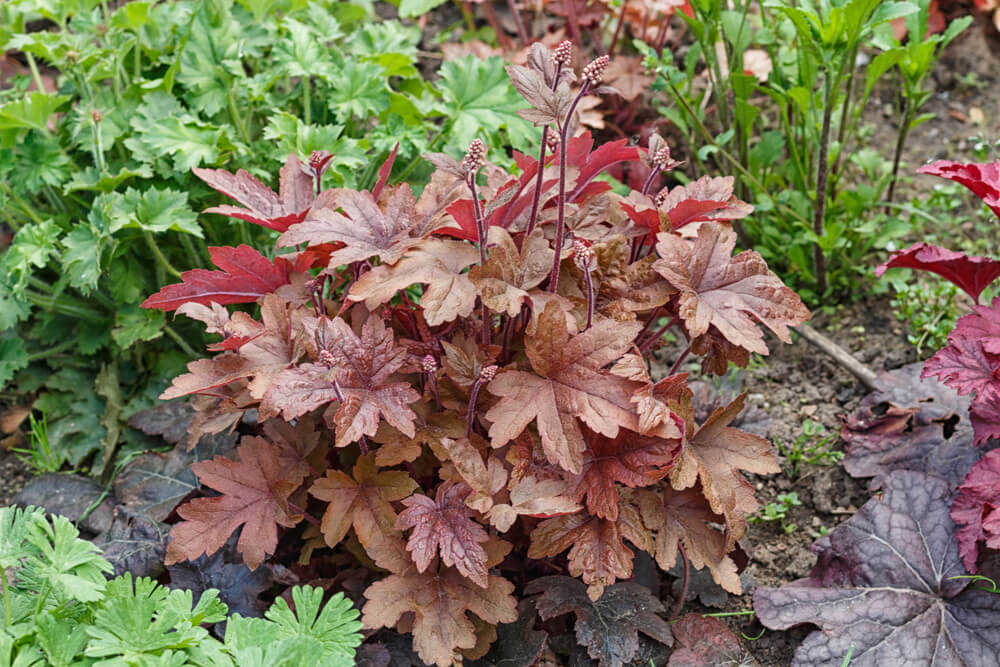
The coral bells plant typically grows outdoors, as it can survive as a perennial in many regions of the United States. That fact leads some to believe that coral bells is not suitable as a houseplant. However, coral bells is a plant that can survive in areas that receive lower light exposure, which allows them to thrive in many indoor growing locations. The reason that coral bells makes it onto this particular list is that there are some varieties that have leaves that are reddish bronze. Just make sure you pick a cultivar like Heuchera ‘Forever Red’ if red leaves are what you are after.
6. Polka Dot Plant (Hypoestes phyllostachya)
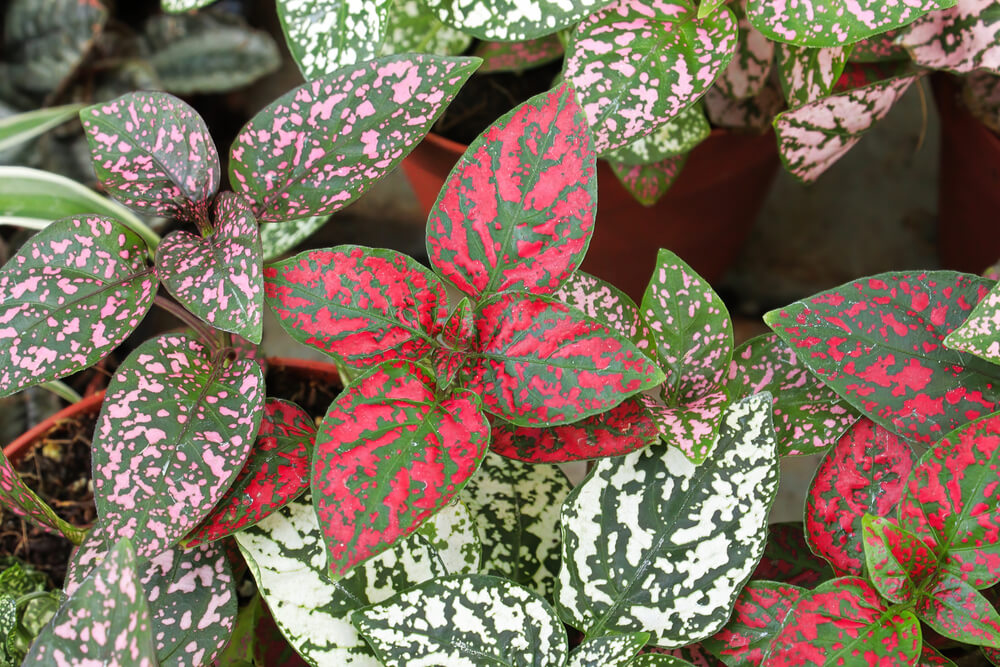
The polka dot plant is an exceptionally popular houseplant option and for a good reason. Regardless of which variety you grow, it will reward you with a set of leaves that can contain prominent speckles of pink, white, or red set against a rich green. Of course, those who love red leaves will want a variety that has that hue, but what you should keep in mind is that polka dot plants often look their best when you plant them in groups and include varieties of varying colors. This planting approach makes for an intricate color display that few plants can match.
7. Red Grass Palm (Cordyline australis ‘Red Star’)
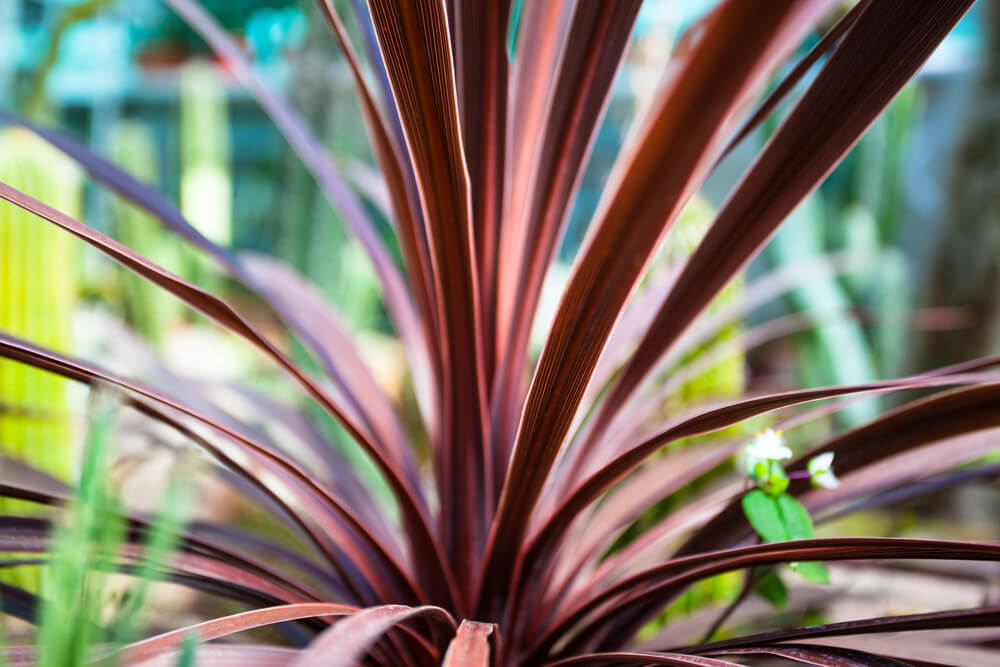
The red grass palm creates a strong visual impact in more ways than one. First, in keeping with the theme of this list, the red grass palm lives up to its name as it boasts a set of long palm-like fronds that have a dark, almost sinister, red color. That foliage creates a very rounded but spiky canopy that sits atop a single main trunk. The red grass palm is an excellent houseplant option, but you should be aware that it is on the larger side. At maturity, this plant can reach a height of about 15 feet tall. However, in indoor growing conditions, smaller mature sizes are more common.
8. Red Peperomia (Peperomia caperata)
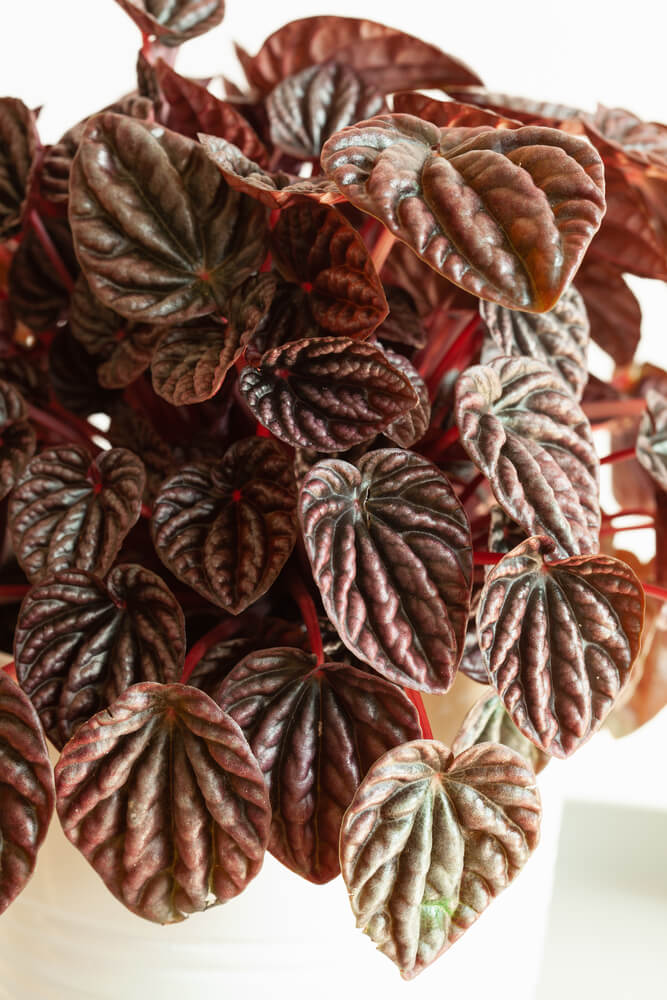
Some who search for a houseplant with red leaves are interested in finding the most vibrant red possible. Meanwhile, others would prefer a red foliage color that is a bit more subtle. This entry on our list is an example of a plant that will please those in the latter group. The red peperomia plant has leaves with a dark and subdued red tone. That foliage also has a distinct texture with deep veins that make for a slightly wrinkly appearance. That combination of color and texture can be the perfect addition to an indoor planting scheme for many hobbyist gardeners.
9. Copperleaf Plant (Acalypha wilkesiana)
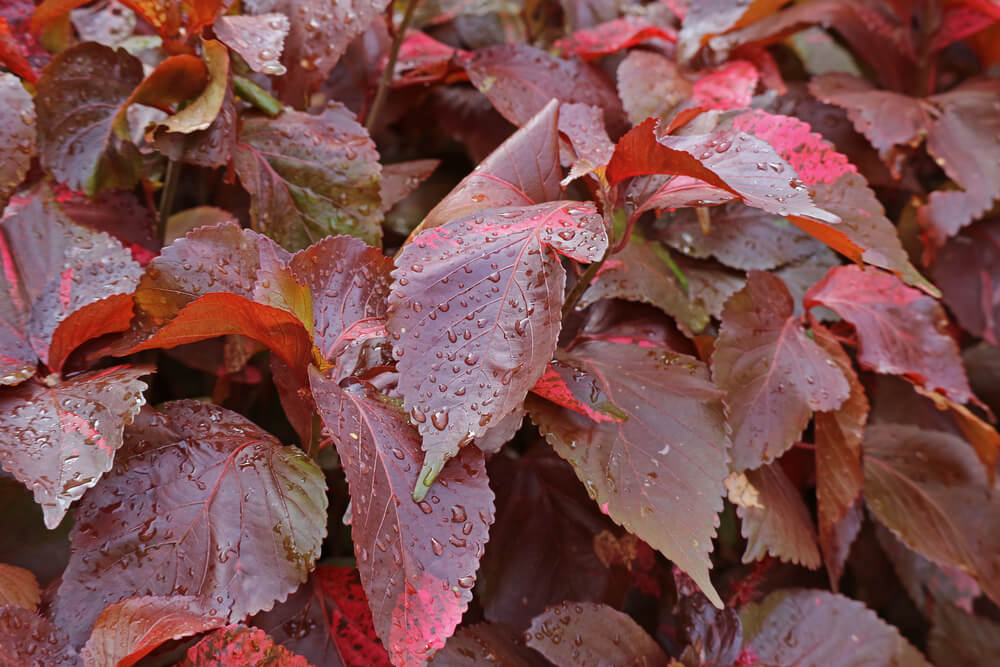
The copper leaf plant is another red-leaved houseplant for those who have space for a larger species. At maturity, this plant will be several feet tall and wide with a shrub-like form. However, if you are not interested in your copperleaf plant getting that large, it is possible to maintain a smaller size throughout ongoing pruning. But whether you keep your copperleaf plant small or allow it to reach its mature size, it will continue to present a set of broad leaves that have a reddish copper shade.
10. Blushing Bromeliad (Neoregelia carolinae)
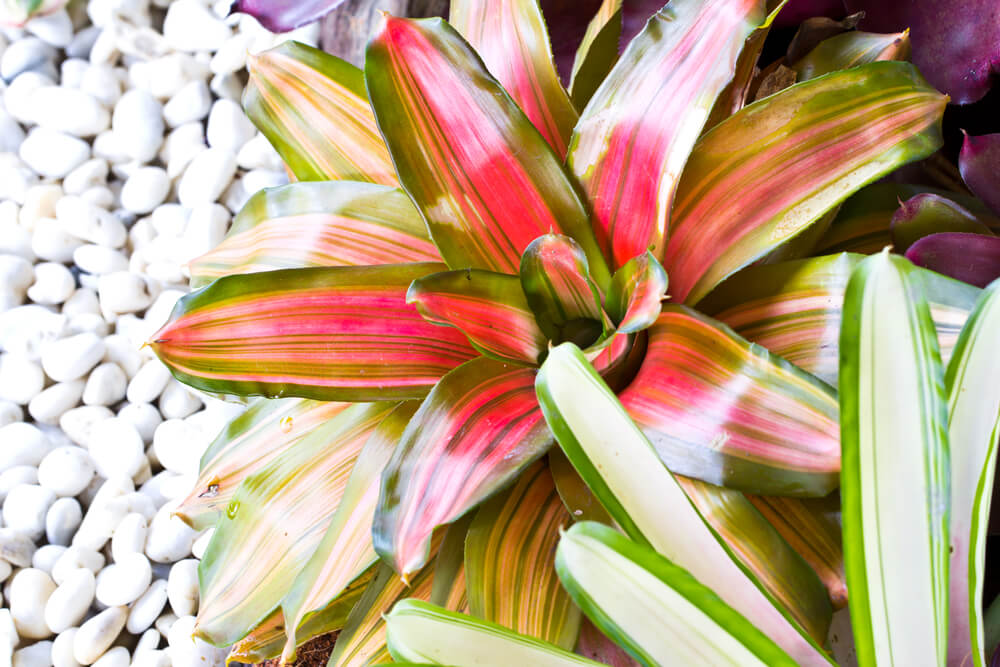
This plant option is one that demonstrates the importance of contrast in a planting design. After all, if you plant your red-leaved houseplant within a group of plants that are also red, then it ceases to stand out as much as it once would. In the case of the blushing bromeliad, this plant provides contrast all on its own. The majority of this plant has green and yellowish streaks along its long leaves. However, the center portions of the plant stand out boldly because they have a strong reddish-pink color that perfectly juxtaposes the rest of the plant.
11. Black Star Nerve Plant (Fittonia albivenis ‘Black Star’)
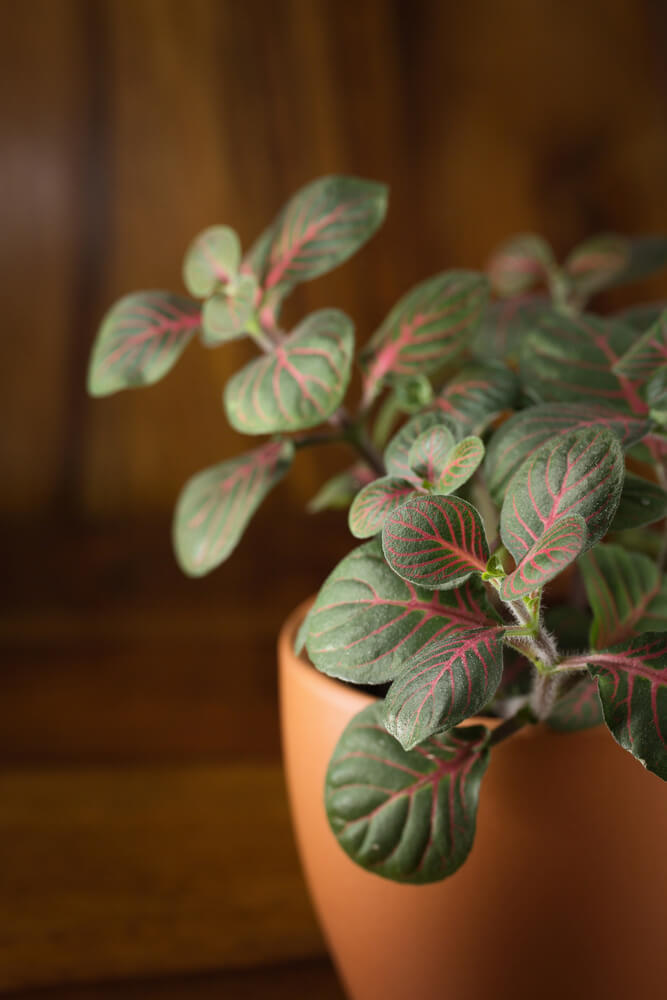
Many of the plants on this list are primarily red, at least as far as their foliage goes. However, the appeal of this plant is a bit different. Rather than offering broad swaths of red, it features red hues as a tasteful accent. Take a look at the leaves of a black star nerve plant, and you’ll notice that they are primarily a dark green color. But what stands out is that the veins of this plant are bright red, at times, bordering on pink. This makes the black star nerve plant perfect for anyone who like red plants but does not want one that will visually overpower the rest of their houseplants.
12. Red Abyssinian Banana (Ensete ventricosum)

If you plant a red Abyssinian banana tree, you might start out expecting this plant to provide you with a harvest based on its name. But the reality is that this species does not provide bananas or edible fruits at all. Instead, it is entirely ornamental. What you will get out of a red Abyssinian banana plant is a set of incredibly large leaves that alone can reach lengths that exceed multiple feet. Those leaves are also not a traditional green and have a dark red color instead.
13. Painted Leaf Begonia (Begonia rex)
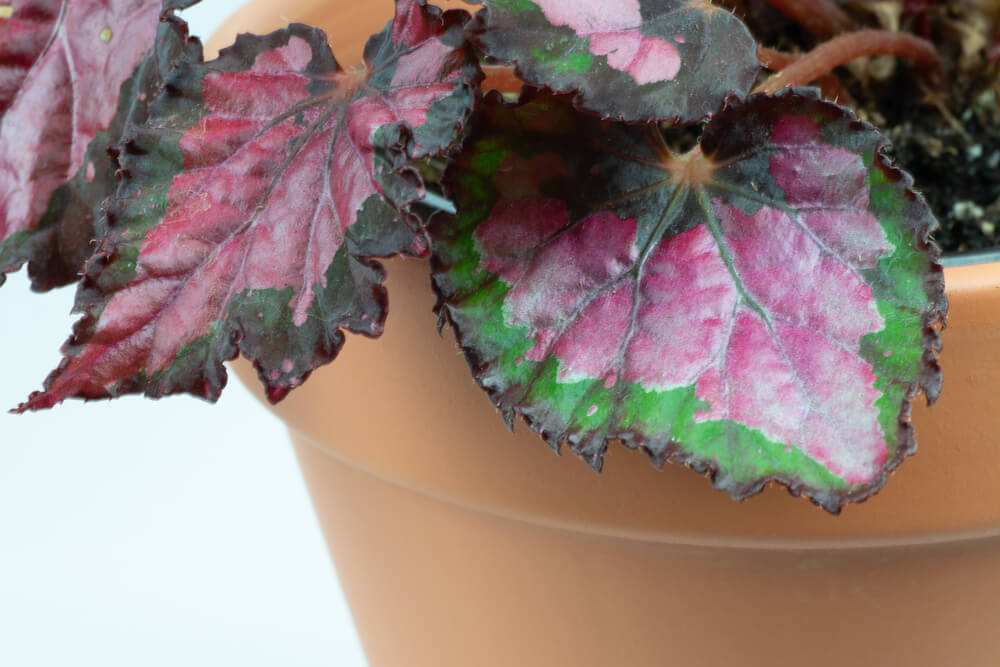
The type of begonias that most people are familiar with are flowering annual plants that grow outdoors during the warmer parts of the year. But this variety, painted leaf begonia, is attractive not because of its flower but because of the colorful nature of its leaves. Some of the most striking versions of this plant’s leaves have both light green and dark red patches. Other versions have leaves that are entirely deep red. Painted leaf begonias also perform very well in shadier areas, which makes them great for indoor growing settings.
14. Croton (Codiaeum variegatum ‘Norma’)
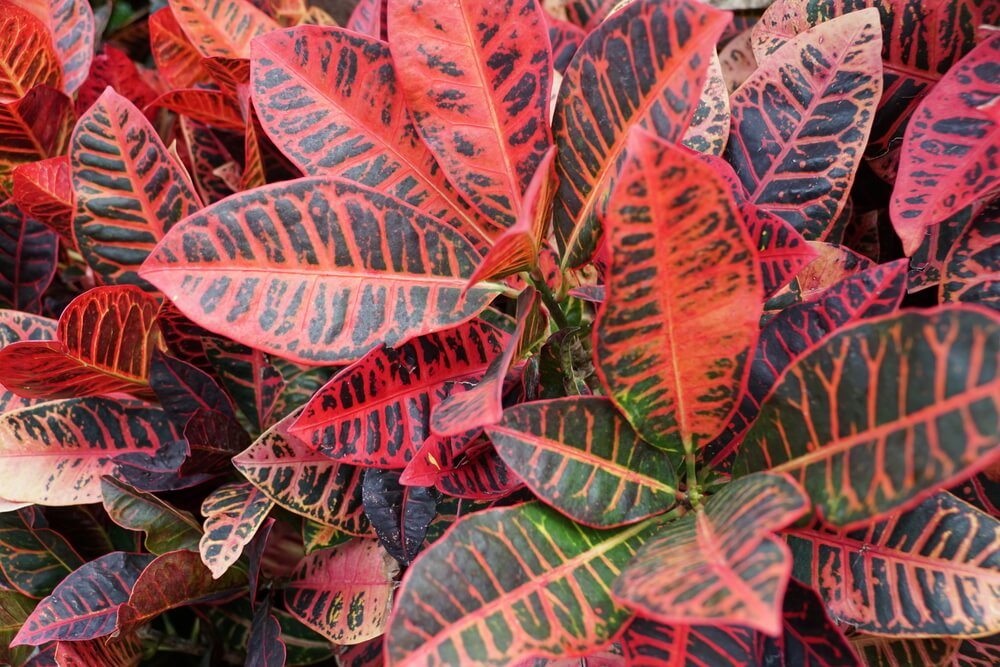
Croton plants can be astoundingly colorful. At times, a single croton plant can hold a wide range of vibrant colors all at once, including red, green, and yellow. Those colorful options have a place in nearly any indoor gardening area, but if you are looking for red leaves, then you’ll want to select certain kinds of croton plants that will guarantee you get the color you need. One of the best cultivars to satisfy a desire for red leaves is the one that people commonly refer to as ‘Norma. This variety is primarily bright red, with patches of dark green as well.
15. Inch Plant (Callisia Repens’ Pink Panther’)

Again, here we have a plant that provides some red hues in a more delicate manner. Rather than having leaves that are so bright that you notice nothing else, the inch plant’s foliage is primarily green with some light hints of purplish red. Despite those leaves being very small, you should not underestimate this plant’s ability to increase its size. In fact, the inch plant gets its name from the fact that it can grow about an inch in a single week. So, if you choose to grow this plant, expect it to expand well beyond its original size.
16. Prince of Orange Philodendron (Philodendron)
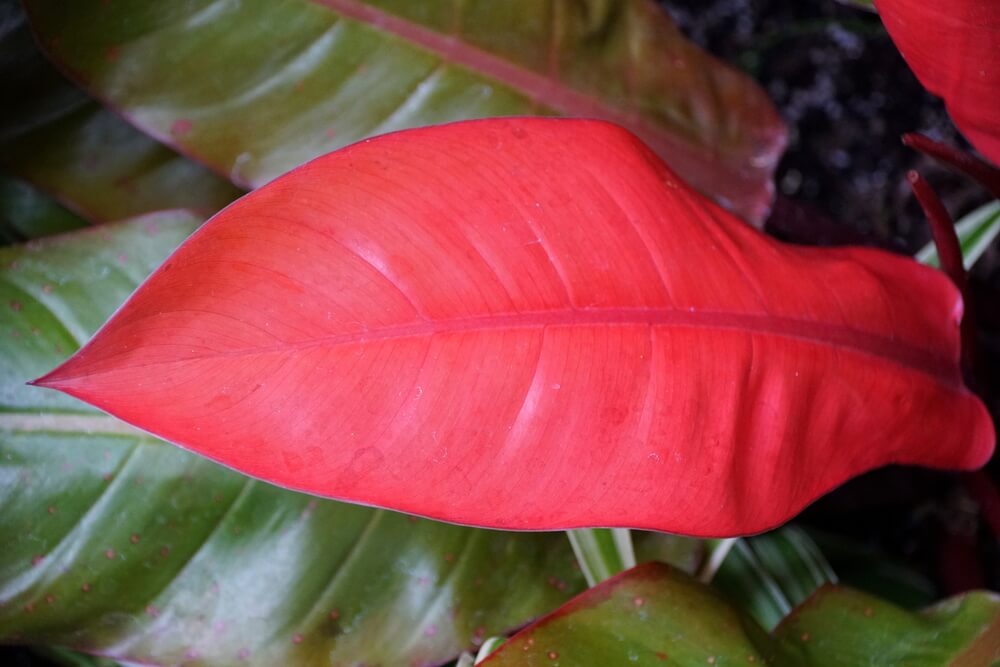
The name of this plant option might lead you to believe that its leaves are more orange than red, but the reality is that this plant is a bit of a misnomer. Its large leaves are almost entirely green. However, the newer leaves that appear on this plant start out with a strong red color. That color fades over time, but the continual production of new leaves means that the prince of orange philodendron is capable of giving you a red hint in your garden on a consistent basis.
17. Coleus (Plectranthus scutellarioides)
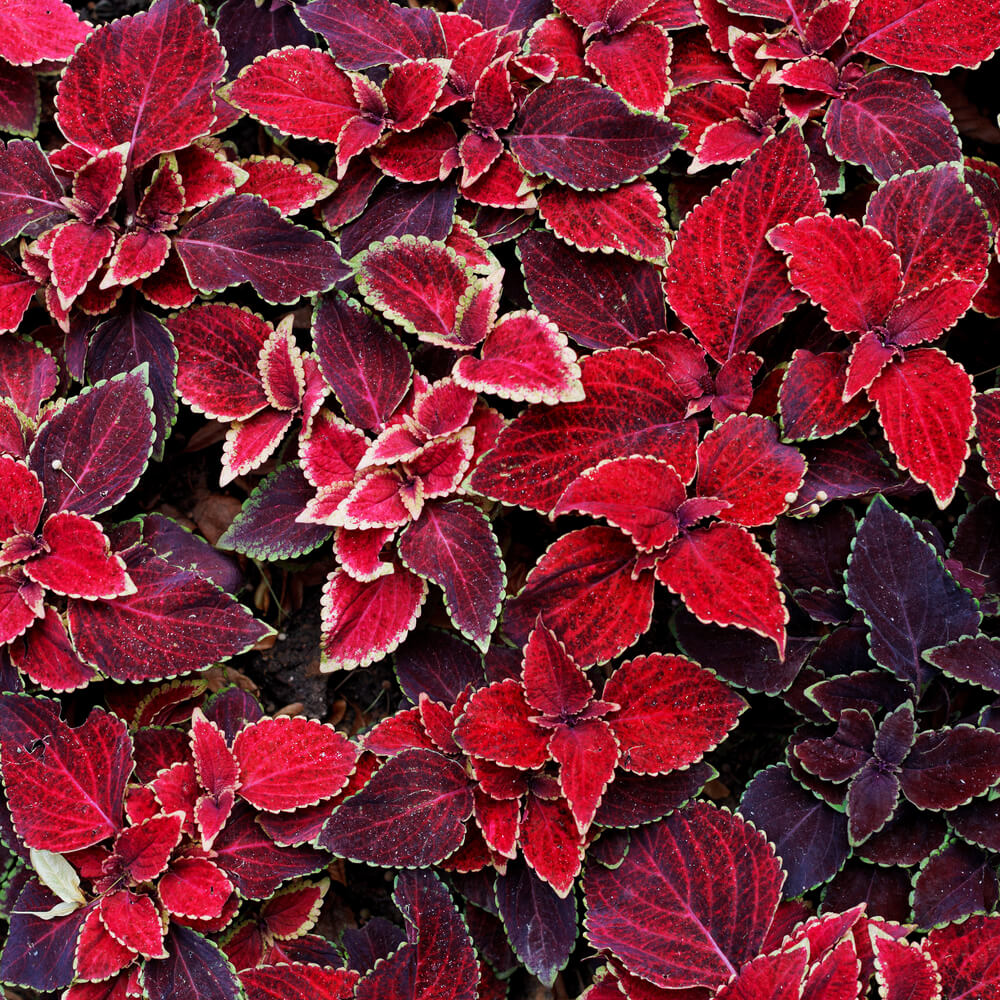
Coleus plants belong on any list of plants with interesting leaves, whether such a list focuses on red leaves or not. These plants have some of the most eye-catching colors of any plant in the world, and true red hues are among those many color options. At times, many of the leaves of a coleus plant will feature two colors at once, often with lighter shades tracing the edges of the leaves’ serrated margins. As such, the coleus plant is one that any lover of houseplants with red leaves should not pass up.
[wp-faq-schema title=”Frequently Asked Questions About Houseplants with Red Leaves” accordion=1]Learning about 17 of the best houseplants with red leaves is a great start, but if you are truly interested in the topic, then you likely have a few more questions about these amazing plants. To help satisfy that curiosity, here are a few answers to some of the most compelling questions that gardeners ask about this topic.
17 Unbelievable Houseplants with Red Leaves That You’ll Love
Generally, many gardeners are unaware of how many houseplants with red leaves there are to choose from. But since you’ve now read through our list, you know better! Houseplants with red leaves come from many different plant families and take many different forms. At times, these plants will give your red as a subtle accent, while in other instances, the leaves of some plants will give large patches of bright red that you can’t help but notice any time you walk by. By reviewing the descriptions of the plants in our list, you’ll be more than prepared to select the best red-leaved houseplant for your home.
